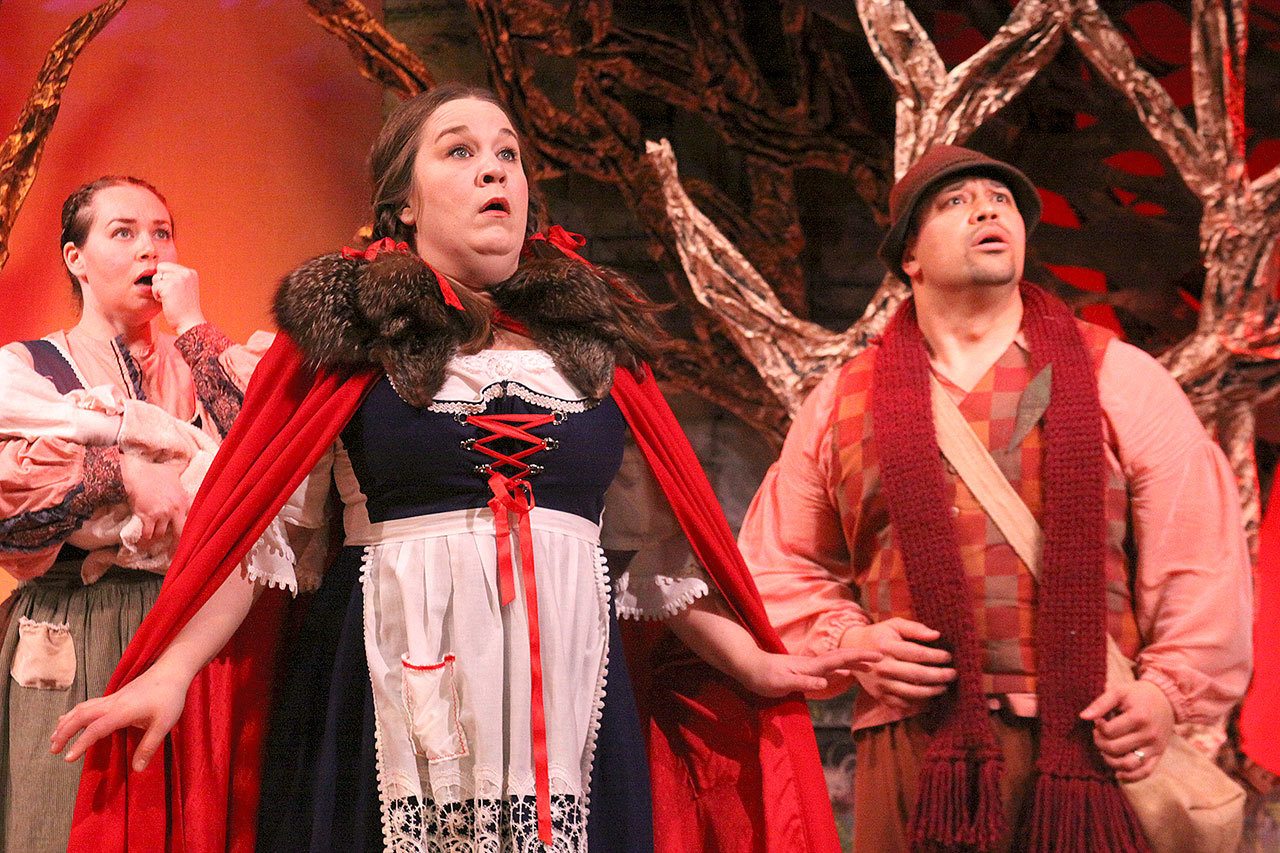One day early last month, Janis Powell felt like the whole world was crashing down around her.
She was sitting in her office at the Whidbey Playhouse when she heard a pounding noise and the building started to vibrate.
“It was like, ‘Boom! Boom! Boom!’” Powell recalled. “And ‘Boom! Boom! Boom!’ I was like, ‘What the heck is that?’”
The loud sound and vibrations were coming from the stage on the second floor, where large speakers were facing downward with the volume cranked up.
Each thundering blast was intended to imitate a giant’s footstep — just one example of the creative and uncanny special effects in store for audiences who come to see the musical, “Into The Woods,” which opens Friday night at the Oak Harbor playhouse.
“The whole building was reverberating,” said Powell, the playhouse manager.
Powell is now accustomed to the loud booms, which occasionally cause the downstairs lights to flicker.
She calls the set design and special effects used in the show “amazing,” and certainly worth any minor disturbances downstairs.
Jim Riney is the technical director and mastermind behind the elaborate lighting, sound, moving props and fog machines used in the musical that brings together classic storybook characters in a modern fairytale set in the thick of the woods.
Riney also served as set designer, spending most of his waking hours over the past month leading a team of set builders while also tweaking lights, projectors, props and moving parts.
In this production, stage hands literally have their hands full.
“The set is fabulous,” said Nate Edmiston, who plays the Steward. “We have moving trees, moving skies. We’ve got thunder, lighting, fog machines, explosions, all kinds of stuff and a giant wandering around.”
“We’ve never had a set like this,” said Douglas Langrock, a longtime playhouse actor.
The show has been roughly a year and a half in the making, at least in terms of the vision and taking inventory of what might be needed to make it extra special, Riney said.
Riney struck a deal with a friend in Los Angeles, leading to the playhouse acquiring four used, high-end, multi-color light strips. Those lights, combined with Riney’s own 12-foot tall rear-projection screens, provide colorful light and dark backdrops that go with the mood shifts portrayed in the show’s music written by Stephen Sondheim.
“Into The Woods” was originally directed on Broadway by James Lapine.
“It’s a brilliant musical,” said Dianna Wilcox, who plays Little Red Riding Hood. “Sondheim and Lapine are brilliant. It is the most complicated music I’ve ever sung in my entire life and I’ve sung a lot of music. It’s challenging vocally. It’s even deeper than I thought it was.”
Gaye Litka teams up with Darren McCoy as the show’s co-directors, and Sue Riney is the producer.
McCoy’s wife, Heather Good McCoy, is Cinderella.
Sue Riney and Litka were part of the cast 20 years ago when “Into The Woods” debuted at the Whidbey Playhouse.
Riney played the Witch. Abby Thuet is playing that role this time in her first Whidbey Playhouse performance.
Langrock and Wilcox also were part of the cast 20 years ago and were ecstatic about the prospect of acting in it again, albeit in new roles.
“Just like 20 years ago, it’s like an all-star cast,” Langrock said. “Everybody sings just wonderfully.”
Wilcox called playing the part of Little Red Riding Hood a “dream role.”
In 1997, that character was portrayed by Susie Thompson, now the show’s assistant director.
“I love the sassiness,” Wilcox said. “I love how she changes and grows. I love the heart of that character. She’s excited but scared, and that’s how many points in our life can feel. When they’re the most exciting, they can also be the most fearful.”
Giant footsteps during the play elicit a lot of fear. No one wants to be eaten by the fairytale character that you can certainly hear, but can’t see.
“It’s just one of those fun Broadway musicals,” Edmiston said. “It’s all the fairytales, and what’s even better, the second act is what happens six months later. And they say the difference between a fairytale and a horror story is when you say ‘the end.’”


